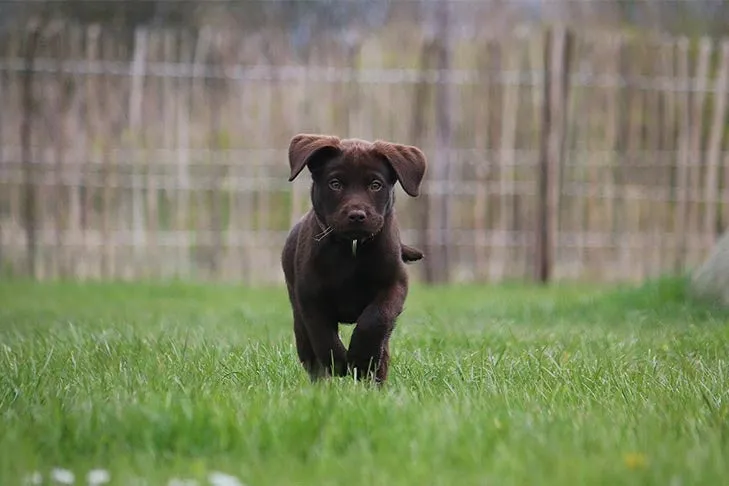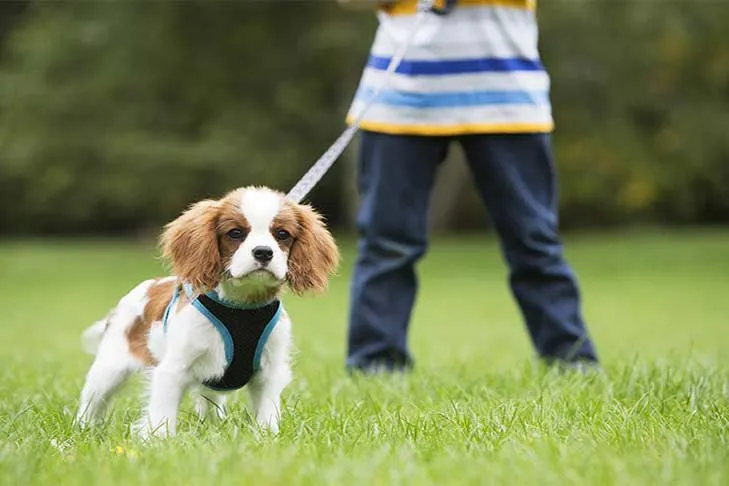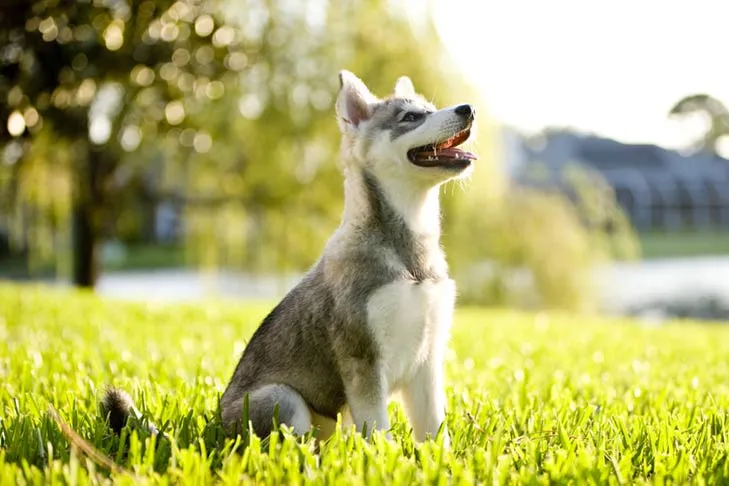Bringing a new puppy home is an exciting time, filled with cuddles, playtime, and the beginning of a lifelong bond. Amidst all the joy, it’s crucial to lay a strong foundation for good behavior through basic training. Among the most vital commands you’ll teach your furry friend, “come” stands out as a non-negotiable skill. A reliable recall isn’t just a party trick; it’s a critical safety measure, allowing your puppy the freedom to explore while ensuring they always return to you when called, keeping them out of harm’s way. This guide from Dog Care Story will walk you through the essential steps for Teaching Puppy To Come To You, fostering a strong, positive relationship based on trust and communication.
The Cornerstone of Puppy Training: Positive Reinforcement
Effective puppy training hinges on understanding canine behavior and employing methods that build confidence and trust. The foundation of all successful training should be rooted in positive reinforcement. This powerful technique involves rewarding your puppy for desirable behaviors, making them more likely to repeat those actions. Instead of bribing, you’re building a clear association: “When I do X, good things happen!”
Rewards can be anything your puppy highly values. For most puppies, small, soft, high-value food treats work best – think tiny pieces of cooked chicken, cheese, or freeze-dried liver. Lavish praise delivered in an enthusiastic voice, gentle petting, or a quick game with a favorite toy can also serve as powerful motivators, especially once your puppy learns to associate them with the primary reward of food. The key is to find what truly excites your puppy and use it strategically.
Crucially, avoid punishment methods such as yelling, harsh leash corrections, or physical intimidation. Punishment can confuse your puppy, erode trust, and may lead to fear or anxiety, making them less likely to respond to your cues. Remember, your puppy isn’t being “stubborn”; they simply don’t understand what you’re asking. Patience, clear communication, and consistent positive reinforcement are your most effective tools.
Puppies can begin simple training as young as 8 weeks old. Keep training sessions brief – 5 to 10 minutes is ideal – to match their short attention spans and prevent boredom or frustration. Always end each session on a high note. If your puppy struggles with a new concept, revert to a command they already know, reward them handsomely for their success, and then conclude the session. This leaves them feeling accomplished and eager for the next session.
 Happy yellow Labrador puppy joyfully running through green grass near a fence, showcasing the freedom a reliable recall provides.
Happy yellow Labrador puppy joyfully running through green grass near a fence, showcasing the freedom a reliable recall provides.
Why “Come” is the Most Critical Command
Beyond general obedience, the “come” command, or recall, holds paramount importance for every dog owner. It’s arguably the single most vital command for your puppy’s safety and well-being. Imagine a scenario where your puppy slips their leash, or you accidentally leave a gate open. A reliable recall could mean the difference between a minor scare and a tragic accident. When your puppy reliably comes back to you, it opens up a world of freedom, allowing them to safely explore parks, beaches, or even just your backyard without constant worry. It strengthens the bond between you, building trust and respect as your puppy learns to look to you for guidance and safety. Mastering this command is a cornerstone of responsible dog ownership, ensuring your puppy can enjoy a fuller, safer life. For more detailed insights, explore how to establish a strong teach your dog to come to you response from your very first training days.
Phase 1: Building a Positive Association with “Come” (Indoors, Low Distraction)
The journey of teaching puppy to come to you begins in a quiet, distraction-free environment, typically indoors. This ensures your puppy can focus entirely on you and the positive experience.
- Name Recognition and “Come” Link: Sit on the floor with your puppy. Say their name, immediately followed by “Come!” or your chosen recall cue. As soon as you say the cue, give them a high-value treat. Repeat this several times. The goal here is not for them to move, but to create a strong, positive association between their name, the word “come,” and a delicious reward. They should begin to anticipate a treat every time they hear the command.
- The “Look Up” Game: Drop a treat on the floor near you. As your puppy finishes eating it, say their name. The moment they look up at you, mark the behavior with a verbal “Yes!” or clicker, and give them another treat. This teaches them that looking at you when their name is called leads to a reward.
- Gradual Distance (Still Static): Once they reliably look up when their name is called, start dropping the treat a little further away. As they finish, say their name. When they look up and turn to face you, reward them. The idea is to get them to orient towards you after finishing a treat at a slight distance. If they don’t respond, move closer and make it easier until they succeed, then try again with a slightly increased distance. Avoid repeating their name multiple times without a response, as this can teach them to ignore it.
Phase 2: Adding Movement and Distance to Your Recall
Once your puppy is consistently looking at you and turning towards you after hearing their name and “come” in a static position, it’s time to add movement and make the recall even more engaging.
- The Chase Game: This is where the fun really begins! Toss a treat a short distance away. As your puppy goes to get it, take a few quick steps backward, crouch down, and enthusiastically call their name followed by “Come!” Most puppies naturally love to chase, so they’ll likely run towards you.
- Lavish Rewards: The moment your puppy reaches you, give them an abundance of praise, several high-value treats, or engage in a quick, exciting play session with a favorite tug toy. Make it the absolute best thing that could happen! This reinforces that coming to you is incredibly rewarding and fun.
- Increasing Distance and Location: Gradually increase the distance you move away from your puppy before calling them. Practice in different rooms of your house. Vary your position – sometimes sitting, sometimes standing, sometimes hiding briefly behind a door or furniture to make it a game. The more varied and exciting you make it, the stronger their recall will become. Consistency in making the act of teaching a puppy to come on command a positive experience is key.
Phase 3: Mastering Recall with Distractions (Gradual Progression)
A truly reliable recall means your puppy will come to you even when there are tempting distractions. This phase requires patience and a systematic approach.
- Introducing Mild Distractions Indoors: Start by introducing very mild distractions inside your home. Have someone walk across the room, or drop a soft toy. Call your puppy’s name and “Come!” when the distraction is present but not overwhelming. If they come, reward heavily. If they don’t, reduce the distraction level and try again.
- Outdoor Practice in Safe Areas: Once your puppy’s recall is strong indoors, move to a safe, enclosed outdoor area like a fenced yard. Begin with very low distractions. Keep your puppy on a long leash (15-30 feet) initially. This allows you to practice “off-leash” recall safely, giving you a backup if they get distracted.
- Gradually Increase Distractions: As your puppy masters recall in a fenced area, slowly introduce more distractions:
- Another person walking calmly nearby.
- A mild sound (e.g., a quiet radio).
- A toy lying on the ground (but not moving).
- Another calm, familiar dog at a distance.
- Always ensure success by keeping the distraction level manageable. If your puppy fails, the distraction was too high. Go back a step.
- Practice the “Collar Grab”: When your puppy comes to you, gently take their collar before giving the final treat or engaging in play. This teaches them that being handled around the collar is also part of the positive experience, which is crucial for safety and leash attachment. If your puppy is timid, kneel sideways and offer treats as you reach for their collar, avoiding direct, intimidating approaches.
 Cavalier King Charles Spaniel puppy on a leash, looking back at its owner during an outdoor training session, emphasizing controlled practice for recall.
Cavalier King Charles Spaniel puppy on a leash, looking back at its owner during an outdoor training session, emphasizing controlled practice for recall.
Essential Tips for a Bombproof Recall
A reliable “come” command is built on consistency, positive experiences, and understanding your puppy’s perspective. Keep these tips in mind as you train:
- Always Make “Come” a Positive Experience: Your puppy should never associate coming to you with anything unpleasant. Never call them to you to scold them, give them a bath (if they dislike it), or end a fun activity (unless you immediately follow with an even better reward). If you need to stop them from doing something undesirable, go to them instead of calling them.
- Consistency is Key: Everyone in the household should use the same recall cue and rewards. Inconsistency confuses puppies and slows down learning.
- Don’t Overuse the Command: If your puppy isn’t responding, don’t repeat “Come!” multiple times. This teaches them that the word doesn’t necessarily require an immediate response. Instead, move closer, make yourself more exciting, or gently guide them towards you, then reward.
- Be More Exciting Than the Distraction: To win against distractions, you need to be the most rewarding thing in your puppy’s environment. Use your happiest voice, exciting body language (crouching, clapping), and their absolute favorite treats or toys.
- Practice Frequently, Keep it Short: Short, daily training sessions are more effective than infrequent, long ones. Aim for 5-10 minutes, several times a day.
- Never Chase Your Puppy: If your puppy runs away when you call, resist the urge to chase them. This often turns into a fun game for them, reinforcing the behavior you don’t want. Instead, turn and run away from them, crouch down, or make a kissing sound – anything to pique their curiosity and encourage them to chase you.
Integrating “Come” with Other Vital Puppy Skills
While recall is paramount, it’s part of a broader set of basic obedience commands that contribute to a well-behaved and safe puppy. These foundational skills complement “come” by building overall control and communication.
- Loose-Leash Walking: Learning to walk politely on a leash teaches your puppy to focus on you even in stimulating outdoor environments. This focus is invaluable when transitioning recall training outdoors, as a puppy who can walk calmly beside you is more likely to respond to a “come” cue.
- Sit and Stay: Commands like “sit” and “stay” teach impulse control and self-regulation. A puppy who can “stay” reliably can hold their position, which can be useful before initiating a recall, especially in distracting environments. It provides a momentary pause for your puppy to focus before moving towards you.
- Teaching “Leave It”: This command is crucial for impulse control and safety. If your puppy is heading towards something dangerous or inappropriate, “leave it” can prevent them from engaging with it, allowing you to then call them away safely. Learning to disregard tempting items is a powerful tool that indirectly supports a stronger recall by teaching focus on your commands over environmental distractions. For a comprehensive guide, explore teaching leave it to a dog.
- Teaching “Go to Bed” or “Place”: This command teaches your puppy to settle in a specific spot, promoting calmness and providing a designated safe space. It’s an excellent way to manage excited behavior and can be a stepping stone for control in various situations. Establishing a “place” command is a wonderful way to teach your puppy to settle down. You can find more details on teaching puppy to go to bed and teach your dog to go to his bed on Dog Care Story.
 An alert Alaskan Klee Kai puppy sitting attentively in vibrant green grass, demonstrating focus and readiness for further training like "come" or "stay."
An alert Alaskan Klee Kai puppy sitting attentively in vibrant green grass, demonstrating focus and readiness for further training like "come" or "stay."
Troubleshooting Common Recall Challenges
Even with the best intentions, you might encounter bumps on the road to a perfect recall. Here are some common challenges and how to address them:
- My Puppy Ignores Me: This is often due to distractions being too high or rewards being too low. Go back to a less distracting environment, make yourself incredibly exciting (happy voice, crouching, running away), and use their absolute highest-value treats.
- My Puppy Comes Slowly: If your puppy is hesitant, they might not be motivated enough. Amp up the rewards, make the interaction even more joyful, and practice in easier settings. Ensure you’re rewarding the moment they arrive, not after they’ve sat or performed another trick.
- My Puppy Only Comes Indoors: Outdoor environments present a myriad of enticing smells, sights, and sounds. You simply haven’t built enough value for “come” in those environments yet. Start in a very secure, low-distraction outdoor space (like a small, fenced yard) with your puppy on a long line, and gradually introduce complexity.
- My Puppy Runs Away When I Try to Grab Them: This is a common issue if the “collar grab” hasn’t been consistently practiced as a positive experience. Ensure every collar grab is followed by a treat or playtime. Avoid grabbing them only when you need to end fun.
- “Better Offer” Syndrome: Sometimes, a squirrel, another dog, or a dropped piece of food is simply more interesting than you. This means you need to increase your value. Become the “treat fairy” with super delicious rewards, or the “fun machine” with an exciting toy. Practice impulse control with “leave it” to help your puppy ignore distractions.
 A calm Staffordshire Bull Terrier puppy relaxed in a down position on an outdoor mat, highlighting the importance of essential commands in puppy training.
A calm Staffordshire Bull Terrier puppy relaxed in a down position on an outdoor mat, highlighting the importance of essential commands in puppy training.
Conclusion
Teaching puppy to come to you is one of the most rewarding and important aspects of early dog training. A reliable recall ensures your puppy’s safety, deepens your bond, and allows them the freedom to experience the world more fully. Remember that training is a journey, not a destination. It requires consistency, patience, and above all, a positive attitude. Keep training sessions fun, short, and always end on a high note. By consistently using positive reinforcement and making yourself the most exciting part of your puppy’s world, you’ll build a strong, reliable recall that will benefit both of you for a lifetime. Continue exploring Dog Care Story for more expert tips and guides to nurture a happy, well-behaved companion.
